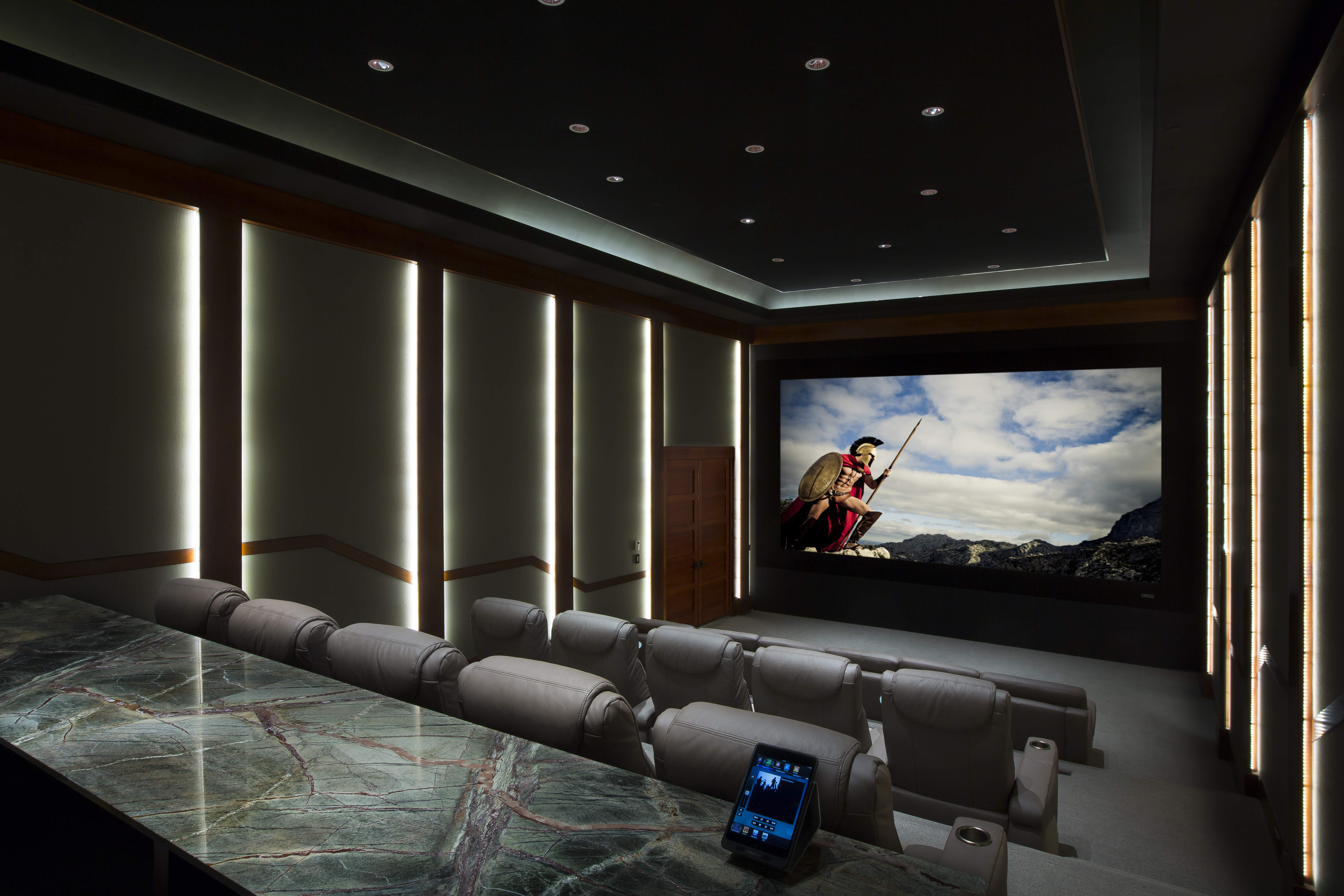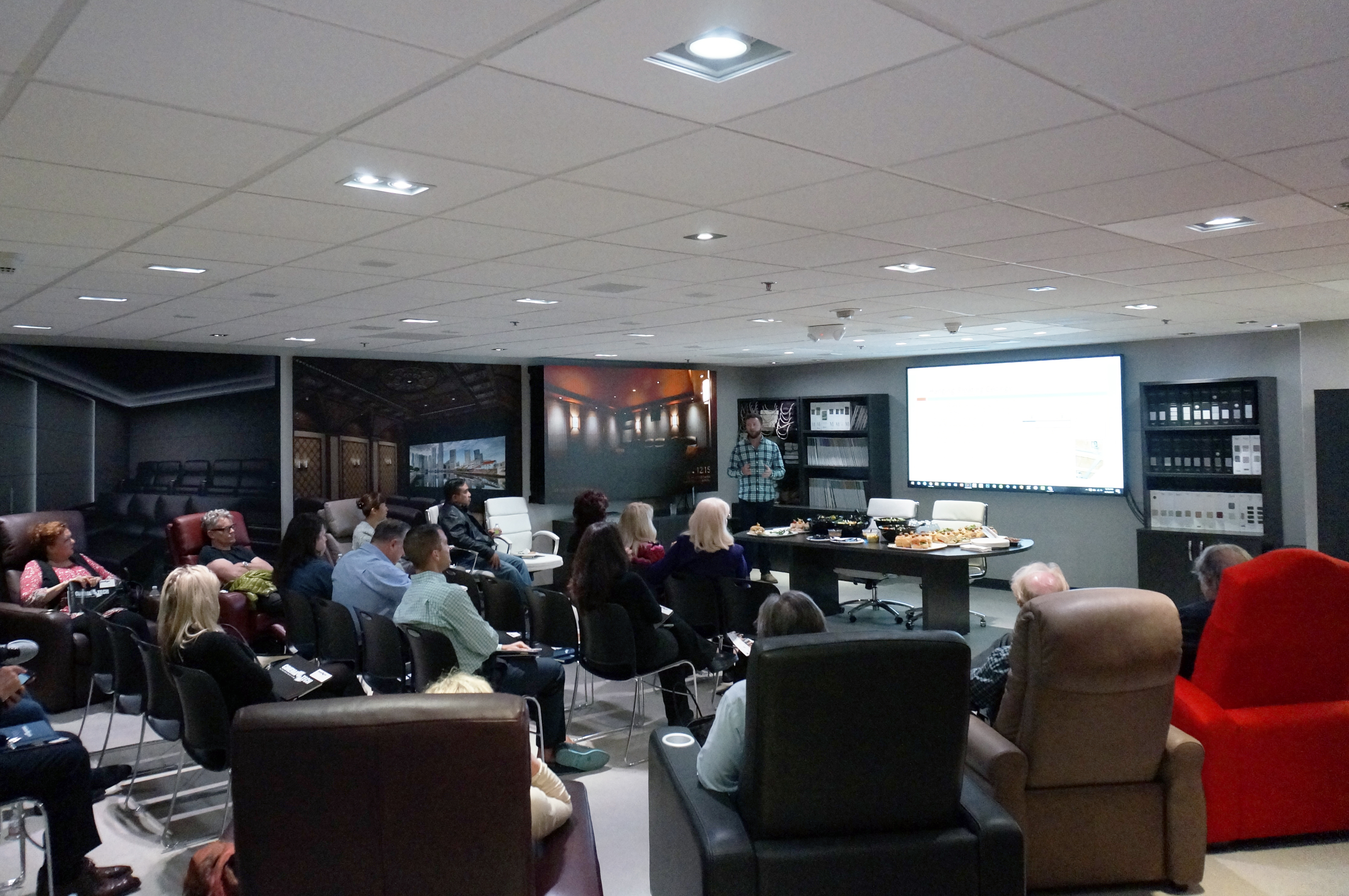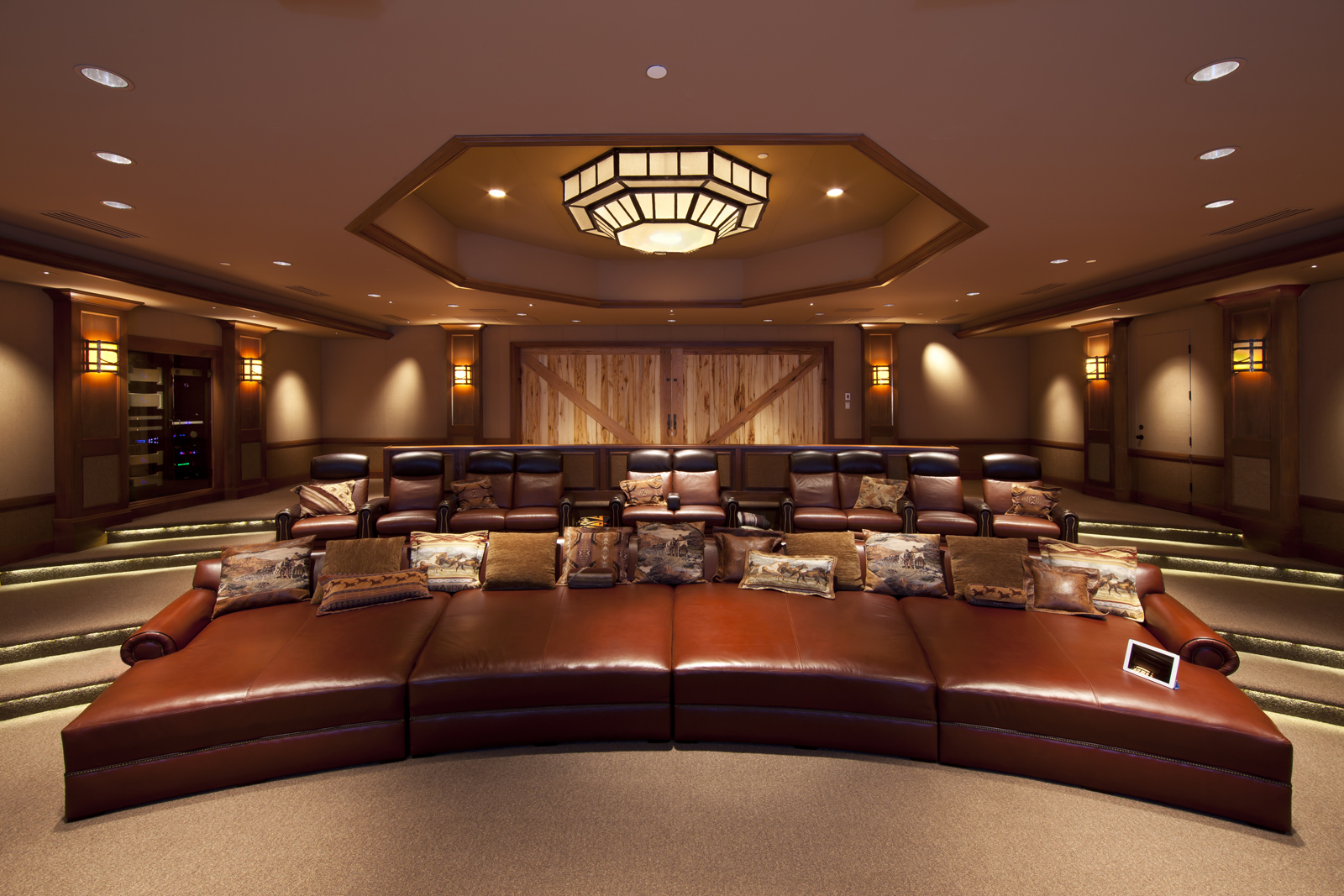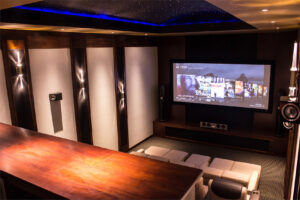News
CinemaTech Shares the Fundamentals of Designing Home Theaters
Posted on 05/23/17
 CinemaTech, the leader in home theater seating, acoustics, design and custom sofas, recently opened the doors to its new West Coast location with a Pacific Design Center showroom. Reflecting on their new home at PDC, CinemaTech’s Vice President, Matt Denton, acknowledges, “We work with designers, integrators, architects, builders and clients. As these trade professionals and their customers shop the PDC for a variety of high-end home products, taking a showroom was the logical choice for us to access this critical market with a centralized design center presence.”
Last week, CinemaTech hosted its first open-house luncheon and CEU presentation to cover the fundamentals of acoustics, sound isolation and designing home theaters. Moderated by Denton, PDC’s network of designers eagerly learned about home theater trends and planning methods. “Designers provide essential insights to aid in our process of creating entertainment systems and environments for their clients that not only sound and perform great but look amazing, as well,” Denton explained.
CinemaTech, the leader in home theater seating, acoustics, design and custom sofas, recently opened the doors to its new West Coast location with a Pacific Design Center showroom. Reflecting on their new home at PDC, CinemaTech’s Vice President, Matt Denton, acknowledges, “We work with designers, integrators, architects, builders and clients. As these trade professionals and their customers shop the PDC for a variety of high-end home products, taking a showroom was the logical choice for us to access this critical market with a centralized design center presence.”
Last week, CinemaTech hosted its first open-house luncheon and CEU presentation to cover the fundamentals of acoustics, sound isolation and designing home theaters. Moderated by Denton, PDC’s network of designers eagerly learned about home theater trends and planning methods. “Designers provide essential insights to aid in our process of creating entertainment systems and environments for their clients that not only sound and perform great but look amazing, as well,” Denton explained.

 Here are some of our favorite takeaways from the informative presentation:
Treat your home theater room from a listening perspective. In an acoustically correct room all the different frequencies should behave evenly; you should hear the sound, not the speaker.
Sound isolation is only as good as its weakest link. If outlets, return air vents and doors are not properly treated, no amount of wall isolation material can truly isolate a theater room.
Mass, Damping and Decoupling. You can achieve varying degrees of sound isolation by adding mass, dampening wall surfaces, and most importantly, decoupling adjoining structures so they are not physically connected.
Here are some of our favorite takeaways from the informative presentation:
Treat your home theater room from a listening perspective. In an acoustically correct room all the different frequencies should behave evenly; you should hear the sound, not the speaker.
Sound isolation is only as good as its weakest link. If outlets, return air vents and doors are not properly treated, no amount of wall isolation material can truly isolate a theater room.
Mass, Damping and Decoupling. You can achieve varying degrees of sound isolation by adding mass, dampening wall surfaces, and most importantly, decoupling adjoining structures so they are not physically connected.
 Current Theater Trends. Notable changes in home theater trends include a transition towards multi-purpose rooms, more contemporary designs, social/conversation seating layouts, sofa-based seating, LED lighting and starlit ceilings.
Proper planning is critical. The biggest problem for a theater room is treating it as an afterthought and not properly planning before construction. Construction of the room will likely cost less if addressed at the beginning of the project versus making modification after the installation.
A great room can outweigh great equipment. You can take incredible equipment and place it in an unsuitable room, and it will sound below average. On the flipside, you can take average equipment and place it in an excellent room, and it will sound above average. Denton explains, “most clients do not understand that to have a truly incredible theater, you cannot spend only 10k – 50k for the whole room and that the best rooms are truly engineered systems.
Learn more about creating the perfect home theater acoustical treatments by visiting our new CinemaTech showroom at Suite M26 or online at mycinematech.com.
Current Theater Trends. Notable changes in home theater trends include a transition towards multi-purpose rooms, more contemporary designs, social/conversation seating layouts, sofa-based seating, LED lighting and starlit ceilings.
Proper planning is critical. The biggest problem for a theater room is treating it as an afterthought and not properly planning before construction. Construction of the room will likely cost less if addressed at the beginning of the project versus making modification after the installation.
A great room can outweigh great equipment. You can take incredible equipment and place it in an unsuitable room, and it will sound below average. On the flipside, you can take average equipment and place it in an excellent room, and it will sound above average. Denton explains, “most clients do not understand that to have a truly incredible theater, you cannot spend only 10k – 50k for the whole room and that the best rooms are truly engineered systems.
Learn more about creating the perfect home theater acoustical treatments by visiting our new CinemaTech showroom at Suite M26 or online at mycinematech.com.


You might like
See all
08/03/2021
Pillow Collection from VONDOM
08/03/2021
VIRTUAL WESTWEEK 2021
08/03/2021
MBRACE from DEDON
03/12/2020
PDC Spring 2020 Product News
03/12/2020
WESTWEEK 2020 UPDATE
01/15/2018
A Parisian Promenade at PDC
01/09/2018
Design Inside Out: Paris Preview
05/03/2017
Peter Shire: Naked Is the Best Disguise
04/28/2017
Five New, Must-Visit PDC Showrooms
Get Social on Instagram
Follow us @pacificdesigncenter
Join Our Mailing List

